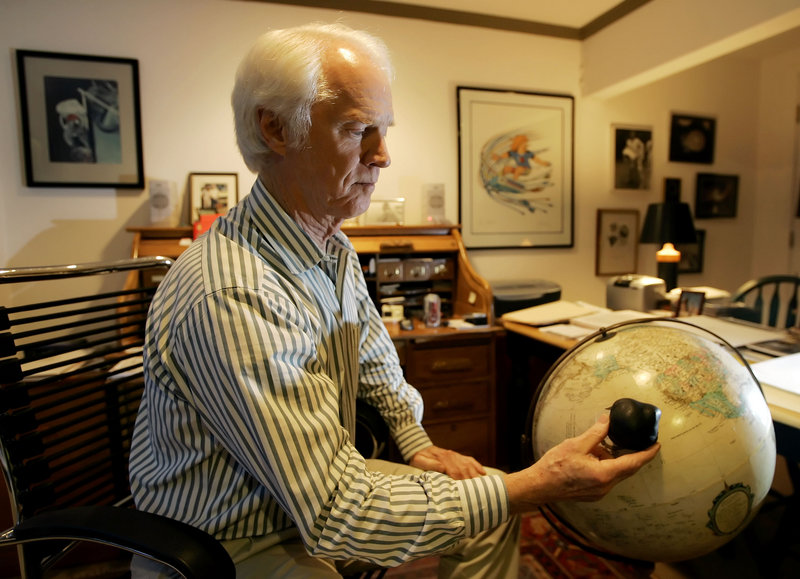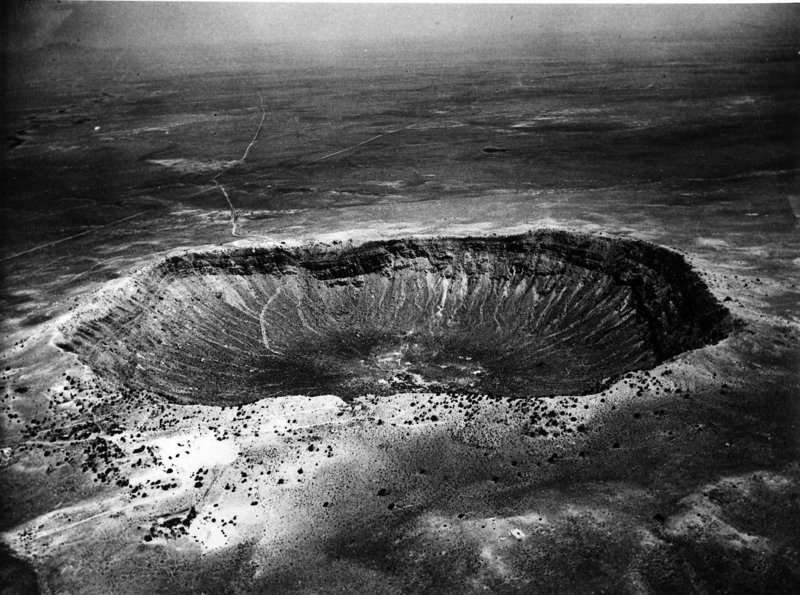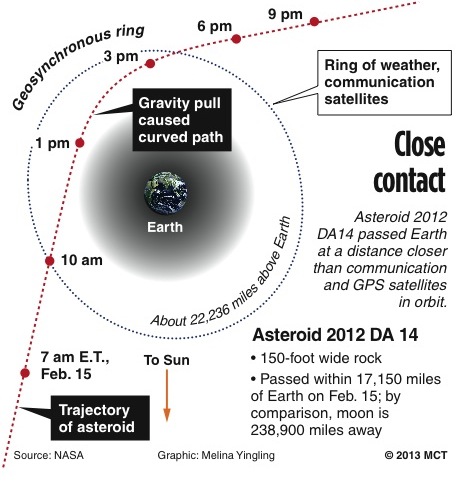Although the probability of a meteorite crashing in their backyards shouldn’t keep ordinary people up at night, scientists who study such matters are worried.
The meteor that streaked across the Russian sky Friday startled scientists worldwide, even as it triggered a window- and roof-rattling shockwave that injured more than 1,000 people in the city of Chelyabinsk.
Astronomers on Friday had their eyes skyward on a separate object, the much larger asteroid known as 2012 DA14. It was coincidence that it came so close to Earth at the same time a meteoroid flamed into the atmosphere over Russia’s Ural Mountains, NASA scientists said. Still, scientists are paying attention to the paths of future near-Earth objects. One nonprofit space research foundation plans an infrared telescope that will be able to detect more meteorites that have potential to inflict damage on world cities.
“This is public safety. We’re doing this because we believe it needs to be done,” said former Apollo astronaut Rusty Schweickart, chairman emeritus of the B612 Foundation, a nonprofit dedicated to protecting Earth from asteroids. Its name comes from the children’s book by Antoine de Saint-Exupery. B612 is the asteroid home cared for by the Little Prince.
There is no surefire system to scan the skies for threatening asteroids, particularly ones that come in at the angle of the meteor over Russia. So in the near future, the best hope is better monitoring of the meteorites that, typically, orbit in a belt between Mars and Jupiter.
Science also has few options for knocking incoming asteroids off course, which was part of the early work done by the B612 Foundation.
Scientists, led by NASA, track thousands of such near-Earth objects. They’re only a fraction of the asteroids in the solar system, however. There are about 500,000 near-Earth asteroids the size of 2012 DA14. Of those, less than 1 percent have been discovered, NASA said.
Until 20 years ago, there was even less ability to track them — and Asteroid 2012 DA14 itself was discovered by amateur astronomers at the La Sagra Sky Survey operated by the Astronomical Observatory of Mallorca in Spain.
The gaps in knowledge are precisely why B612 was founded, Schweickart said. They have plans to deploy in 2018 an infrared space telescope; its purpose will be to discover asteroids that could do serious damage to Earth. Their telescope still would be unable to capture asteroids the size of the one that entered the atmosphere near Chelyabinsk, Schweickart said. But it will capture many more of those the size of Asteroid 2012 DA14.
“The purpose is to discover most — we’re not going to get all — of the asteroids that are out there,” Schweickart said. “All of them are much bigger than the one that hit Russia this morning. I’m not counting things that break glass, I’m talking about things that will wipe out cities or more.”
There’s little appetite in Congress right now to increase spending, but Friday’s double-whammy may have changed some minds.
“As the world leader in space exploration, America has made great progress for mankind,” the chairman of the Science, Space, and Technology Committee, Rep. Lamar Smith, R-Texas, said in a statement. “But our work is not done. We should continue to study, research and explore space to better understand our universe and better protect our planet.”
It’s also a matter of national security, said Rep. Rush Holt, D-N.J., a physicist and the former assistant director of the Princeton Plasma Physics Laboratory. He cited congressional testimony from 2002, when a meteor exploded over the Mediterranean at a time of particularly tense relations between India and Pakistan. If the meteor had exploded over India or Pakistan, one military leader warned, it might have been misidentified as a nuclear attack.
“There should be some tens of millions in annual funding in order to meet the goal that Congress has set, which is to follow anything of significance in the asteroid/meteor category,” Holt said. “And we’re not doing anything close to that.”
And yet, Smith said in his statement, “Fifty years ago, we would have had no way of seeing an asteroid like this coming.”
Astronomers were giddy Friday as NASA broadcast live from one of the best space-viewing points in the world, the Gingin Observatory near Perth, Australia.
“What an exciting day. It’s like a shooting gallery,” said Paul Chodas of NASA’s Near-Earth Object program at the Jet Propulsion Laboratory in California. “We have two rare events of near-objects approaching the Earth on the same day.”
The two objects had different trajectories, and the asteroid monitored worldwide Friday was much larger — about the length of half a football field.
The asteroid was the closest known object of its size to fly by Earth. Unlike the Russian meteor, scientists were aware of it and accurately predicted that it would come closer than some weather and communication satellites but leave them unharmed. Those satellites orbit about 23,000 miles up; the meteorite came within about 17,000 miles from Earth.
There was never a risk the large asteroid would collide with Earth, but if one of its size were to hit here, “its crater would be larger than Monaco,” astrophysicist Neil deGrasse Tyson, host of the “StarTalk” radio program, said Friday.
Smaller meteorites crash to Earth daily — they can be seen as “shooting stars.” But most aren’t found, said Marc Fries, a research associate at Smithsonian’s Museum of Natural History. Many fall into the ocean, which covers 70 percent of the Earth. Or they enter the atmosphere in remote places where they go unseen.
According to NASA, Meteor Crater in Arizona is the best preserved crater on Earth and measures about 4,000 feet in diameter. It provides a good example of what sort of impact meteors can have.
Few are as dramatic or as big as the one caught on video in Russia. Thanks to the dashboard-mounted cameras that many Russians use to deter police corruption, the asteroid’s meteoric path was filmed from cars.
Send questions/comments to the editors.





Success. Please wait for the page to reload. If the page does not reload within 5 seconds, please refresh the page.
Enter your email and password to access comments.
Hi, to comment on stories you must . This profile is in addition to your subscription and website login.
Already have a commenting profile? .
Invalid username/password.
Please check your email to confirm and complete your registration.
Only subscribers are eligible to post comments. Please subscribe or login first for digital access. Here’s why.
Use the form below to reset your password. When you've submitted your account email, we will send an email with a reset code.